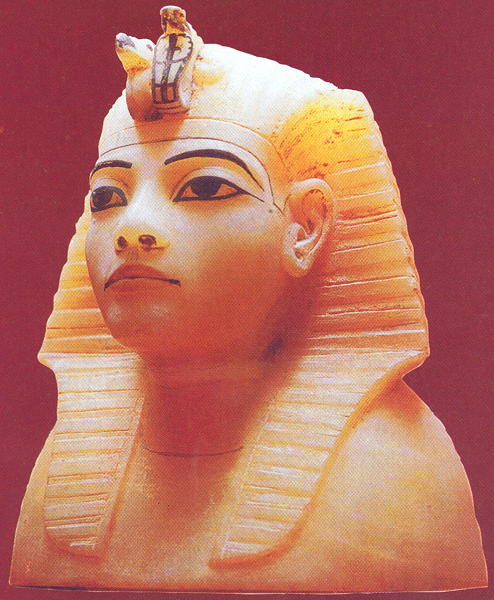Image Details

Erich Lessing
Symbols of power, a vulture and a uraeus (serpent), adorn the brow of the headdress on this lid from a canopic jar, a vessel containing some of the viscera of the pharaoh. Made of alabaster and measuring about 9 inches high, this lid comes from the tomb of Tutankhamon (1347–1337 B.C.). The vulture represented Nekhbet, the national goddess of Upper Egypt, and the uraeus stood for Lower Egypt. Together they signified the two lands over which the pharaoh ruled.
Yahweh, the Israelite god, challenges Pharaoh’s sovereignty and power by appropriating the uraeus symbol during the confrontation in Exodus 7:8–13. Through Yahweh’s power, Aaron’s staff becomes a snake. When Pharaoh’s wise men turn their rods into snakes, Aaron’s snake swallows them, dramatically demonstrating Yahweh’s superiority. Subsequently, Yahweh would further demonstrate his power by “hardening” Pharaoh’s heart.
